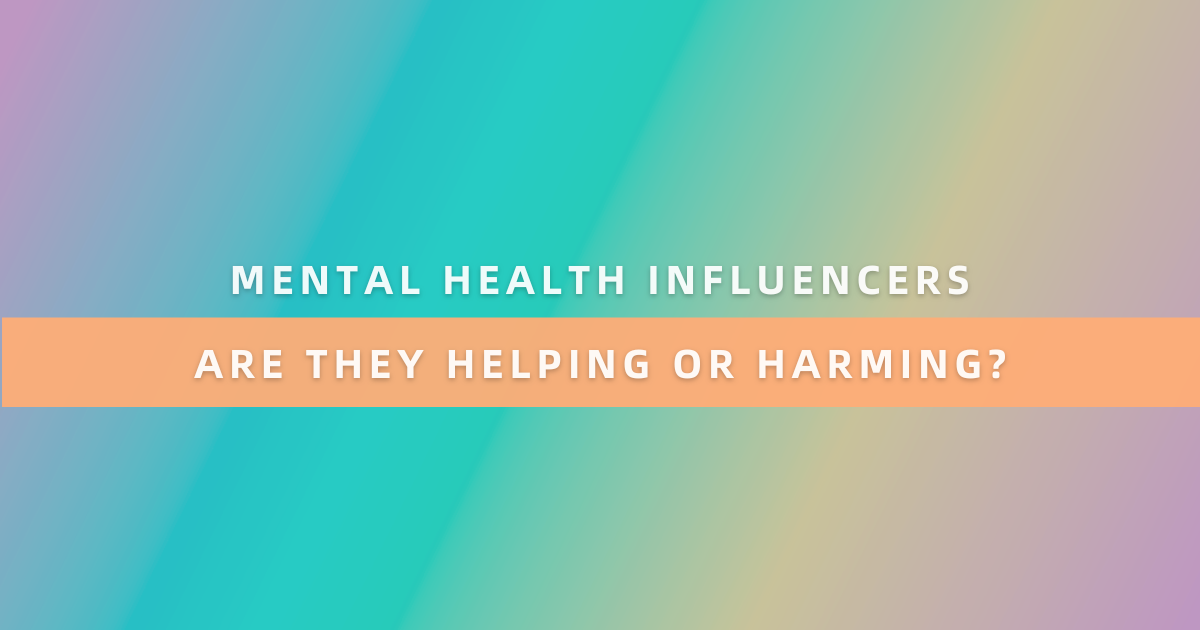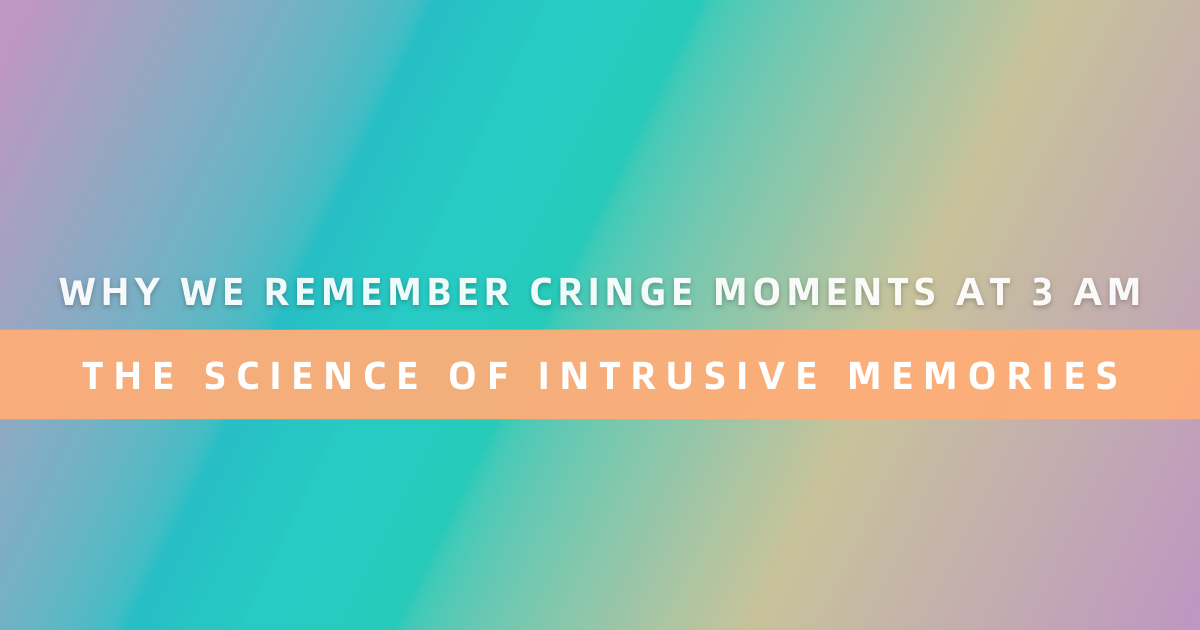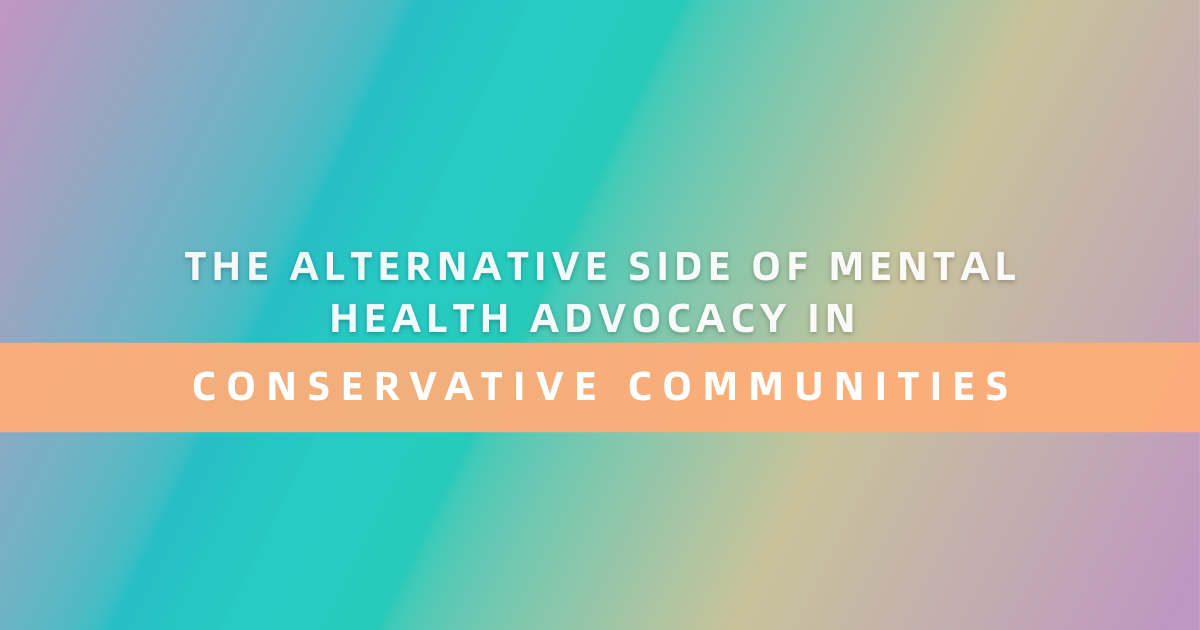Welcome to the age of mental health influencers. Where trauma is content, healing is hashtagged, and complex psychological concepts are reduced to shareable infographics. But as millions turn to social media for mental health support, a critical question emerges: Are these influencers filling a desperate need or creating new problems?
How We Got Here
The explosion of mental health content on social media didn’t happen in a vacuum. It emerged from a perfect storm of societal need and systemic failure. With therapy waitlists stretching months and costs soaring beyond reach for many, people desperately seeking help turned to the most accessible resource available: their phones.
The pandemic accelerated this shift exponentially. As mental health struggles skyrocketed and traditional services became even less accessible, social media filled the gap. Suddenly, everyone from licensed therapists to life coaches to people who’d simply “done the work” positioned themselves as mental health authorities. The algorithm rewarded vulnerability, turning personal trauma stories into viral content and coping mechanisms into trending audio clips.
The numbers tell a staggering story. The hashtag #MentalHealthAwareness has over 30 billion views on TikTok. Instagram accounts dedicated to therapy concepts routinely amass millions of followers. YouTube therapists monetize their expertise through ad revenue and sponsored content. What started as grassroots awareness has evolved into a multi-million-dollar industry where mental health content is created, consumed, and commodified at unprecedented scales.
But this democratization of mental health information comes with complications that the platform architects never anticipated. When complex psychological concepts get compressed into 60-second videos, nuance disappears. When engagement metrics drive content creation, sensationalism often trumps accuracy. When anyone can claim expertise, distinguishing qualified help from dangerous advice becomes nearly impossible for vulnerable audiences seeking support.
The Seductive Appeal of Instagram Psychology
Mental health influencers succeed because they offer something traditional therapy often doesn’t: immediate accessibility, relatable presentation, and the illusion of personal connection. Understanding their appeal is crucial to evaluating their impact.
Instant Gratification in a Crisis: When you’re spiraling at 2 AM, your therapist isn’t available. But Instagram is. Mental health influencers provide 24/7 access to content that feels supportive, offering coping strategies and validation exactly when traditional support systems are inaccessible. This immediate availability can feel lifesaving in moments of acute distress.
The Parasocial Relationship Effect: Followers develop one-sided emotional connections with influencers who share vulnerable content. When an influencer discusses their anxiety, followers feel understood. When they overcome challenges, followers feel hope. This parasocial relationship can provide comfort, but it also creates false intimacy that substitutes for real therapeutic relationships.
Destigmatization Through Normalization: Influencers discussing their mental health struggles openly have undeniably reduced stigma. Seeing someone successful talk about therapy, medication, or diagnosis helps followers feel less alone and more willing to seek help. This representation particularly matters for communities where mental health remains heavily stigmatized.
The Algorithm as Therapist: Social media algorithms become inadvertent mental health providers, serving content based on engagement patterns. If you interact with anxiety content, you’ll see more anxiety content. This can create echo chambers that either validate experiences or potentially worsen symptoms through constant exposure to triggering material.
Accessibility Across Barriers: For people in rural areas, those without insurance, or individuals from cultures where therapy is stigmatized, mental health influencers provide otherwise inaccessible support. The content is free, available in multiple languages, and doesn’t require explaining to family members why you’re seeing a therapist.
When Education Becomes Exploitation
The line between mental health education and exploitation blurs when followers become revenue streams. The monetization of mental health content creates perverse incentives that can harm the very people seeking help.
Trauma as Content Strategy: The algorithm rewards emotional intensity. Influencers quickly learn that sharing traumatic stories generates more engagement than educational content. This creates pressure to continuously mine personal pain for content, modeling unhealthy patterns for followers who may begin viewing their own struggles as potential content rather than experiences requiring healing.
Diagnostic Industrial Complex: Some influencers build entire brands around helping followers “identify” narcissists, recognize “trauma bonds,” or discover their “attachment styles.” While psychoeducation has value, the proliferation of diagnostic content encourages followers to pathologize normal relationship challenges and armchair diagnose others based on limited information.
The Course-Selling Pipeline: Many influencers use free content as a funnel toward expensive courses, coaching packages, or affiliate products. Vulnerable followers, desperate for more support, may spend thousands on programs created by people with no relevant qualifications. The promise of healing becomes a marketing strategy targeting those least able to afford exploitation.
Dangerous Oversimplification: Complex mental health conditions get reduced to catchy phrases and memorable acronyms. Trauma becomes any negative experience. Boundaries become cutting off anyone who disagrees with you. Healing becomes buying the right course or following the right morning routine. This oversimplification can prevent people from seeking appropriate care for serious conditions.
The Wellness-Washing of Serious Conditions: Mental health influencers often blur the lines between clinical conditions and general life challenges. Depression is feeling sad. ADHD becomes being distracted. This trivialization can invalidate those with serious conditions while convincing others they have disorders requiring intervention when they’re experiencing normal human emotions.
Real Harm in Real Time
Beyond theoretical concerns, mental health influencers can cause concrete harm to vulnerable followers. These dangers often go unaddressed due to the lack of regulation in the space.
Replacement Rather Than Supplement: Research indicates that many people use mental health social media content as a replacement for professional help rather than a supplement. A study published in the Journal of Medical Internet Research found that 42% of young adults reported using social media mental health content instead of seeking traditional therapy, often citing influencer content as “sufficient” for their needs [1].
Retraumatization Through Overconsumption: The endless scroll of trauma content can retraumatize viewers. Constant exposure to discussions of abuse, mental illness, and suffering, even when intended as educational, can worsen symptoms for people with their own trauma histories. The algorithm doesn’t discriminate, serving potentially triggering content based on past engagement.
Misdiagnosis and Misidentification: Influencers describing symptoms lead to widespread self-diagnosis based on incomplete information. Followers convince themselves they have conditions they don’t, potentially seeking inappropriate treatment or medication. Conversely, serious conditions might be minimized if they don’t match the influencer’s portrayed version.
Toxic Positivity 2.0: While many influencers critique toxic positivity, they often replace it with new problematic frameworks. “Healing journeys” must be linear and photogenic. “Doing the work” becomes performative rather than genuine. Recovery gets measured in follower counts and engagement metrics rather than actual well-being improvement.
Boundary Violations: Some influencers blur professional boundaries by offering direct advice, responding to follower trauma dumps in comments, or positioning themselves as authorities beyond their scope. Followers may delay seeking real help, believing their parasocial relationship with an influencer provides sufficient support.
The Contagion Effect: Research on social contagion shows that excessive exposure to mental health content, particularly around self-harm and eating disorders, can increase these behaviors in vulnerable populations. While influencers may intend to raise awareness, the constant discussion can normalize and inadvertently encourage harmful behaviors.
The Surprising Benefits Nobody Wants to Admit
Despite valid criticisms, dismissing mental health influencers entirely ignores the real benefits they provide. A nuanced view acknowledges both potential harm and genuine help.
Democratization of Psychoeducation: Previously, mental health education remained locked behind academic paywalls and professional training. Influencers make concepts like attachment theory, nervous system regulation, and trauma responses accessible to people who might never otherwise encounter these ideas. This knowledge can be genuinely empowering when presented responsibly.
Representation Matters: Seeing mental health professionals and advocates who look like them, share their cultural background, or understand their specific challenges helps marginalized communities feel seen. BIPOC, LGBTQ+, and other underrepresented groups often find their first affirming mental health content through influencers from their communities.
Bridge to Professional Help: Many therapists report that clients arrive better informed about mental health concepts thanks to social media education. Influencers can normalize therapy-seeking and provide language for experiences people previously couldn’t articulate. The best influencers explicitly encourage professional help rather than positioning themselves as replacements.
Community Building: Comment sections and communities formed around mental health influencers can provide genuine peer support. People share experiences, resources, and encouragement. While not replacing professional help, these communities combat isolation and provide validation during difficult times.
Rapid Response to Current Events: During collective traumas like natural disasters, mass shootings, or pandemic stress, mental health influencers can provide immediate coping resources. Traditional mental health systems move slowly; influencers can offer real-time support and psychoeducation when people need it most.
Harm Reduction Approach: For people who absolutely won’t or can’t access traditional therapy, mental health influencers might provide the only support they’ll accept. While imperfect, some mental health education beats none, particularly if it prevents crisis escalation or encourages eventual help-seeking.
Spotting Dangerous Mental Health Content
Learning to evaluate mental health content critically protects against potential harm. Watch for these warning signs:
Absolute Statements: Beware influencers who claim their way is the only way, dismiss all other approaches, or present complex issues as simple. Mental health is nuanced; anyone claiming to have all the answers likely has none.
Credential Inflation: Check actual qualifications. “Certified coach” means little without knowing the certifying body. “Trauma-informed” doesn’t equal trauma specialist. Many influencers use vague titles that sound impressive but indicate no actual clinical training.
Boundary Pushing: Professional therapists maintain clear boundaries. Influencers who offer personal phone numbers, claim special relationships with followers, or provide specific advice about individual situations cross ethical lines that trained professionals wouldn’t.
Fear-Based Marketing: Content that creates anxiety about mental health to sell solutions is manipulative. Watch for influencers who constantly identify new “problems” that conveniently their course/coaching/product solves.
Guaranteed Outcomes: No ethical mental health professional promises specific results or timelines. Healing is individual and non-linear. Anyone guaranteeing you’ll “heal your trauma in 30 days” or “cure anxiety forever” is selling false hope.
Oversharing Without Purpose: There’s a difference between vulnerability that educates and trauma dumping for engagement. Educational content uses personal experience to illustrate concepts; exploitation uses pain for views without providing value.
Anti-Professional Rhetoric: While legitimate critiques of mental health systems exist, influencers who discourage all professional help or claim to offer superior alternatives to trained therapists pose serious risks to followers who need clinical intervention.
The Ethics Crisis Nobody’s Addressing
The wild west of mental health social media operates without meaningful oversight, creating ethical dilemmas that the platforms seem unwilling to address.
The Regulation Gap: Unlike licensed therapists bound by ethical codes and oversight boards, influencers face no regulations. They can give advice, share misinformation, or exploit vulnerable followers without consequence. The platforms profit from this content while bearing no responsibility for its impact.
Informed Consent Impossibility: Ethical therapy requires informed consent, understanding risks, benefits, and alternatives. Social media makes this impossible. Followers consuming content don’t consent to potential triggers, don’t understand the creator’s qualifications, and can’t assess whether the content applies to their situation.
The Data Dilemma: Comments revealing personal mental health struggles become data harvested by platforms and potentially sold to advertisers. The intimate details followers share seeking support get commodified in ways traditional therapy’s confidentiality protections would never allow.
Algorithmic Amplification of Harm: Platforms amplify content based on engagement, not accuracy or safety. Sensationalized, potentially harmful content often outperforms responsible education. The algorithm doesn’t distinguish between engagement from genuine help and engagement from outrage or triggered responses.
The Accountability Vacuum: When influencer advice causes harm, no recourse exists. Unlike licensed professionals who face malpractice consequences, influencers can delete comments, block critics, and continue operating without addressing damage caused. Followers harmed by bad advice have no regulatory body for complaints.
Commercialization of Community: The transformation of peer support into profit centers raises ethical questions about exploiting vulnerability. When does building community cross into cultivating dependence? When does sharing experience become selling false hope to desperate people?
The Future of Mental Health in Digital Spaces
The genie won’t return to the bottle. Mental health content on social media is here to stay. The question becomes how to harness benefits while minimizing harm.
Platforms must take responsibility for the mental health content they profit from. This might include verification systems for mental health professionals, warning labels on potentially triggering content, and algorithm adjustments that prioritize safety over engagement.
Professional organizations need to provide guidance for members engaging in social media education. Clear ethical guidelines about online mental health content could help responsible professionals navigate these spaces while maintaining appropriate boundaries.
Consumers must become more discerning about mental health content. Media literacy, specifically focused on evaluating mental health information, should be as common as general internet safety education.
The integration of technology and mental health offers immense potential for increasing access and reducing stigma. But realizing this potential requires thoughtful approaches that prioritize genuine help over viral content, sustainable healing over quick fixes, and professional ethics over profit margins.
Mental health influencers aren’t inherently good or bad. Like any tool, their value depends on how they’re used. The most responsible influencers acknowledge their limitations, encourage professional help, and use their platforms to genuinely educate rather than exploit. The challenge lies in identifying these voices among the noise and using their content as one part of a comprehensive approach to mental wellness.
Ready to move beyond social media snippets to comprehensive mental health support? Discover how Theryo’s AI-enhanced platform combines the accessibility of digital tools with the depth of professional care, no influencer drama required. Because your mental health deserves more than what fits in a story.
Frequently Asked Questions
1. How can I tell if a mental health influencer is qualified to give advice?
Look for clear credentials, including licensure (LCSW, LMFT, PhD, PsyD), board certifications, and active practice status. Qualified professionals will openly share their credentials, scope of practice, and limitations. Be wary of vague titles like “coach” or “expert” without specific qualifications backing them up.
2. Is it unhealthy to follow multiple mental health accounts on social media?
Following mental health content isn’t inherently unhealthy, but oversaturation can be problematic. If you spend hours consuming this content, feel worse after scrolling, or use it to avoid real-life action, it’s time to reassess. Curate your feed mindfully and take regular breaks from mental health content.
3. Can social media mental health content actually trigger or worsen symptoms?
Yes, absolutely. Constant exposure to trauma narratives, symptom descriptions, and crisis content can trigger anxiety, depression, or trauma responses. The algorithm doesn’t distinguish between educational interest and harmful fixation, potentially creating cycles of triggering content consumption.
4. What should I do if I think an influencer’s advice harmed me?
Document the specific content and its impact. Seek professional help to address any harm. Report dangerous content to the platform. Share your experience in comments if comfortable, warning others. Consider filing complaints if the person holds professional licenses. Remember, you deserve support for any harm experienced.
5. Why do some therapists discourage following mental health social media accounts?
Some therapists worry about misinformation, boundary confusion, and clients comparing their progress to curated online narratives. They may also be concerned about clients self-diagnosing or trying interventions without professional guidance. Discuss with your therapist how to use social media content constructively within your treatment.
6. Is it okay to use mental health influencer content instead of therapy if I can’t afford treatment?
While not ideal, using quality mental health content is better than no support. Look for influencers who acknowledge their limitations, cite credible sources, and encourage professional help when possible. Additionally, consider exploring low-cost therapy options, such as community mental health centers, training clinics, or online therapy platforms that offer sliding scales.
7. How do mental health professionals feel about influencer therapists?
Opinions vary widely. Some professionals appreciate colleagues who increase access and reduce stigma. Others worry about ethical violations, oversimplification, and the commercialization of healing. Many fall somewhere between, supporting responsible education while critiquing harmful practices. The field continues grappling with these questions.
8. What’s the difference between a mental health influencer and a therapist who happens to be on social media?
The key difference lies in boundaries and intent. Therapists on social media provide general education while maintaining professional boundaries. They don’t offer specific advice, diagnose followers, or blur the lines of therapeutic relationships. Influencers might prioritize engagement and growth over these ethical considerations.
9. Can parasocial relationships with mental health influencers be therapeutic?
Parasocial relationships can provide comfort and modeling of healthy behaviors, but shouldn’t replace real relationships or professional help. They work best as supplements that inspire real-world action. The danger comes when these one-sided connections become substitutes for genuine support or prevent seeking needed help.
10. How do I talk to my therapist about mental health content I’ve seen online?
Bring it up directly: “I saw content about X that resonated with me. Can we discuss whether this applies to my situation?” Good therapists welcome these discussions as starting points for exploration. Be open about what attracted you to the content and any concerns or hopes it raised.
11. Are there any regulations governing mental health content on social media?
Currently, minimal regulations exist. Platforms have community guidelines but rarely enforce them consistently for mental health content. Professional licensing boards may act if licensed professionals violate ethical codes online, but unlicensed influencers face no oversight. This regulatory gap remains a significant concern requiring advocacy and change.
12. What makes mental health content go viral, and why might that be problematic?
Viral mental health content often features dramatic personal stories, simple solutions to complex problems, or validating messages that feel immediately applicable. The problem? What spreads widely isn’t necessarily what’s most helpful or accurate. Viral content prioritizes engagement over education, potentially spreading misinformation or oversimplified solutions to complex mental health challenges.







